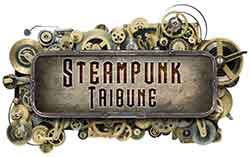The Victorian era, a period in British history from 1837 to 1901 during Queen Victoria’s reign, was marked by a series of profound inventions that transformed society. This epoch is closely associated with the Industrial Revolution, which saw a transition from hand production methods to machines, new chemical manufacturing processes, iron production techniques, and the increased use of steam power and water power. The era’s technological advancements were pivotal in catalyzing the evolution of the modern world, reshaping industries, and significantly influencing the daily lives of people.

Inventions during the Victorian era were not confined to any single domain; instead, they spanned various fields including communication, transportation, and domestic life. The telegraph, for example, revolutionized the way people communicated, shrinking the world with its ability to quickly relay messages across great distances. Similarly, the inception of the steam locomotive transformed transport and commerce, enabling more efficient movement of goods and people.
Moreover, perhaps less glamorous but equally impactful, the Victorian era saw numerous innovations in public health and domestic appliances. Technologies like the flush toilet, the first practical incandescent light bulb, and antiseptics in surgery fundamentally shifted standards of living and medical practices. These inventions and many others laid the cornerstone for a society that increasingly relied on technological innovation to drive progress and address the ever-growing demands of an industrialized world.
Significant Inventions and Discoveries
The Victorian era witnessed an explosion of ingenuity that transformed communication, transportation, and both domestic and industrial landscapes. Notable advances in these areas laid the foundation for the modern world.
Communication Technologies
The invention of the telephone by Alexander Graham Bell in 1876 revolutionized personal and business communication. It allowed instant voice interaction over distance, heralding a new era of connectivity. Similarly, the electric telegraph, a system for transmitting text messages via electrical signals, drastically increased the speed of long-distance communication.
| Year | Invention | Inventor |
|---|---|---|
| 1876 | Telephone | Alexander Graham Bell |
| 1837 | Electric Telegraph | Samuel Morse |
The camera, evolving substantially during this time, brought in a new way to capture and preserve moments, with the likes of George Eastman advancing photographic technology.
Transportation Breakthroughs
The Victorian era saw the expansion of the railway system, with locomotives becoming the driving force behind a rapidly growing network. This advancement made travel and goods transportation faster and more efficient. The underground railway, especially, changed the face of city transport in London, becoming the world’s first subway system.
Additionally, the motorcar, enhanced with rubber tires and improved roads including tarmac, began to emerge as a popular means of personal transport, freeing society from the limitations of horse-drawn conveyances.
Domestic and Industrial Advancements
The sewing machine made clothing production less labor-intensive and more accessible, aiding both domestic life and the garment industry. Typewriters emerged as valuable office tools, improving the efficiency of business correspondence and record-keeping.
| Invention | Importance |
|---|---|
| Sewing Machine | Enhanced clothing production |
| Typewriter | Streamlined office work |
Industrially, the development of the Bessemer process for steel production provided the materials necessary for building modern infrastructure and machinery. The introduction of the flushing toilet improved sanitation standards in the domestic sphere. Lastly, the discovery of X-rays by Wilhelm Röntgen in 1895 allowed for unprecedented insights into the human body, marking the beginning of a new chapter in medical diagnostics.
Notable Victorian Era Figures

The Victorian era heralded a surge in technological and industrial innovation, marked by influential figures whose legacies persist. Pivotal inventors and leaders of the time not only shaped the course of history but also laid the foundations for future advancements.
Important Inventors and Innovators
Alexander Graham Bell – Inventor of the telephone, Bell’s 1876 invention revolutionized global communication. His work extended beyond the telephone, also impacting the development of optical telecommunications and aeronautics.
Thomas Edison – With over 1,000 patents, Edison was a prolific American inventor and businessman. His invention of the incandescent electric light bulb in 1879 illuminated the world and his contributions to phonograph technology and motion pictures were groundbreaking.
Karl Benz – A pioneer in the automotive industry, Benz created the first practical automobile powered by an internal combustion engine in 1885. His innovations paved the way for modern cars.
James Starley – Known as the father of the bicycle industry, Starley’s advancements in bicycle design were instrumental. His “safety bicycle” was a precursor to the modern bicycle.
George Eastman – Eastman revolutionized photography through the invention of roll film and his establishment of Eastman Kodak Company in 1888. His work made photography accessible to the general public.
Wilhelm Röntgen – Discoverer of X-rays in 1895, Röntgen opened new realms in medical diagnostics. His discovery is considered one of the cornerstone scientific achievements of the era.
Isambard Kingdom Brunel – An iconic figure in engineering, Brunel designed and built major bridges, docks, and the Great Western Railway, which transformed British infrastructure and travel.
Influential Leaders and Royals
Queen Victoria – Reigning from 1837 to 1901, Queen Victoria’s monarchy saw an empire on which “the sun never set,” reflecting the vast expansion and power of Britain during her reign.
Prince Albert – Husband of Queen Victoria, Prince Albert supported and promoted the arts and sciences. He was a driving force behind the Great Exhibition of 1851, celebrating industry and innovation.
The Victorian period remains an epic epoch of human ingenuity, largely attributed to the influential figures who laid the groundwork for a rapidly changing world.
Scientific and Medical Progress

The Victorian era witnessed monumental strides in healthcare and scientific understanding. New discoveries and innovations reshaped traditional practices leading to the emergence of modern medicine.
Medicinal Advancements
The genesis of radiology came with the groundbreaking invention of the x-ray by Wilhelm Conrad Roentgen in 1895. This pivotal discovery allowed physicians to peer inside the living human body without surgery, drastically improving diagnostic accuracy.
Victorian medicine also saw the introduction of antiseptics by Joseph Lister, cultivating a milestone in the prevention of postoperative infections. It laid the groundwork for sterile surgical techniques that are crucial in modern medicine.
Technological Discoveries in Science
Scientific exploration in the Victorian era led to the conception of technologies that transformed the research landscape. The invention of microscopes with enhanced precision fostered a deeper understanding of bacteria and cells, fuelling microbiology advances.
In the realm of physics, the era was marked by the articulation of electromagnetic theories by James Clerk Maxwell. His insights laid the foundations for numerous contemporary technologies, including telecommunications and various applications of electromagnetic fields.
Social and Cultural Impact
The Victorian era saw significant technological advancements that altered everyday life and catalyzed social change. Innovations not only enhanced lifestyles and leisure but also drove social reforms and education, reshaping the societal landscape of the time.
Lifestyle and Leisure
The introduction of the bicycle and its popular variation, the penny farthing, revolutionized personal transportation, affording greater mobility and freedom to the masses. This newfound autonomy enabled people to venture beyond their immediate neighborhoods, fostering a sense of adventure and exploration.
- The bicycle contributed to:
- Increasing physical fitness and outdoor activity.
- Providing an affordable and efficient means to travel.
The Christmas card emerged as a popular custom, reflecting the era’s cultural shift towards personal communication and celebration of festive occasions.
- Impact of Christmas card:
- Boosted the postal service industry due to increased mail traffic.
- Encouraged the expression of sentiment and well-wishing among the public.
Social Reforms and Education
Victorian advancements played a pivotal role in social reform. The advent of public flushing toilets represented a landmark in public health, improving sanitation and reducing the spread of diseases in urban areas.
- Advancements in sanitation:
- Public flushing toilets became a symbol of modernization and improved public health standards.
- Led to the better overall hygiene of the population.
In the realm of education, reform efforts expanded literacy and education to broader segments of society, including lower social classes.
- Education and social reform:
- Introduction of policies that made education compulsory for children.
- Enhanced social mobility and informed citizenry leading to additional reforms.
Implications on Modern Society
The Victorian era’s technological advancements have paved the way for subsequent industrial and economic growth, as well as a transformation in cultural and social structures.
Industrial and Economic Development
Victorian inventions laid the foundational stones for modern industry. An increase in coal production during the era fueled the expansion of iron works and the development of steel, vital to both constructions and machinery. The introduction of petrol engines subsequently revolutionized transportation and trade. The following table outlines the key Victorian inventions and their direct impact on specific industrial sectors.
| Victorian Invention | Modern Industry Impact |
|---|---|
| Coal-powered Steam Engines | Enabled mass production and factory growth |
| Iron and Steel Production | Constructed frameworks for buildings and infrastructures |
| Petrol Engines | Innovated automotive and aviation industries |
The railway network, initially powered by steam, not only catalyzed the movement of goods and resources but also the mobility of the workforce, broadening labor opportunities and markets, which in turn spurred economic diversification and growth.
Cultural and Societal Evolution
The seismic shifts in industry during the Victorian times brought about sweeping changes in culture and society. Electric lighting, replacing gas lamps, extended both work and leisure hours, reshaping urban landscapes and lifestyles. In bullet points, here are the specific cultural and societal shifts:
- Increased literacy rates: As industrialization demanded educated workers, schooling became more widespread.
- Expansion of the middle class: Economic opportunities created by industrial expansion led to a burgeoning middle class.
- Global influence: With the pervasive railway network, cultural exchange and trade flourished, linking distant societies.
The Victorian era’s industrialization and innovations continue to resonate, having established constructs that define modern economic principles and deeply influence cultural norms.
Global Influence and Expansion
The Victorian era marked a period where Britain’s industrial ingenuity had a profound impact on global trade and the dissemination of technology.
Colonial Expansion and Trade
During the Victorian era, Britain’s colonial expansion was instrumental in the widespread influence of its inventions. The empire established extensive trade networks, particularly in India, Australia, and parts of Asia and Africa. The advent of locomotives, a quintessential British innovation, played a crucial role in the infrastructure development of colonies, allowing for the efficient transport of goods and people. Railways became synonymous with the British influence, as London set the standards for transportation technology across its territories.
- Locomotives: Key to trade in British colonies
- India: 34,000 miles of track by 1920
- Australia: Interconnected states with rail
- Trade Goods:
- Cotton and textiles from England
- Tea from Asia
- Gold and wool from Australia
British control of trade routes also facilitated the United Kingdom’s economic growth, as it allowed for the import of raw materials from colonies and the export of manufactured goods from England to international markets.
Spread of Victorian Inventions Abroad
The Victorian era saw the global spread of numerous British inventions, influencing the technological and communication sectors around the world. The Penny Black, the world’s first adhesive postage stamp introduced in 1840 in Britain, revolutionized the concept of affordable mail service. Following its success, countries across Europe, Asia (including Japan), and other continents adopted the postage stamp system. The consequent proliferation of post boxes made correspondence more accessible, marking an important leap in international communication efficiency.
Key Victorian Inventions:
- Penny Black Stamps: Global standard for prepaid postage
- Britain: Introduced in 1840
- Europe: Adopted similar systems by 1850s
- Post Boxes: Enhanced public access to mailing services
- London: First pillar post box in 1855
- Japan: Introduced in 1871, after the Meiji Restoration
These inventions were not merely novel at the time but became the cornerstone of modern postal services, demonstrating the transformative power of Victorian technological advancements.




